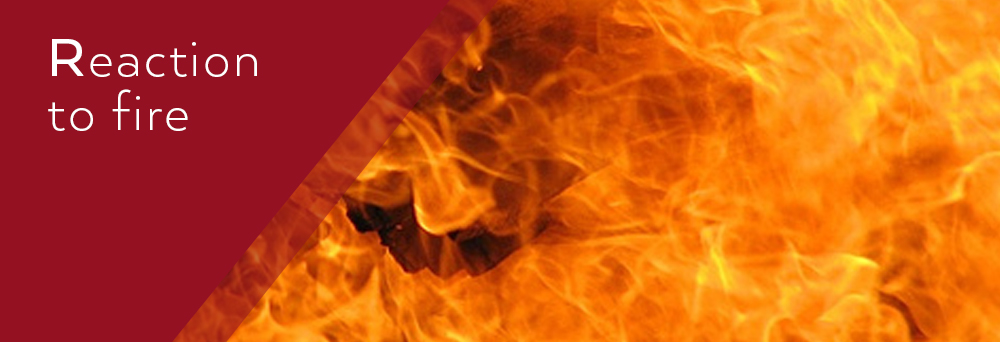Classification of reaction to fire of glass products
Recommendation from Glass for Europe
Glass for use in buildings and construction works shall declare a reaction to fire performance in their declaration of performance (DoP) established according to Regulation (EU) 305/2011 (Construction Product Regulation).
The declaration of a reaction to fire performance depends on the type of glass products for use in buildings. Two types of products need to be distinguished.
► First, glass not containing organic materials, i.e. basic glass, coated glass, toughened glass, heat strengthened glass, chemically strengthened glass, mirrors, glass blocks and paver units, are classified A1 according to Commission Decision 96/603/EC, as amended 2000/605/EC.
► Second, glass containing a certain amount of organic materials, i.e. laminated (safety) glass and insulating glass units, should be classified for their reaction to fire according to EN 13501-1[1] . For these products, a single burning item test (SBI) according to EN 13823 should be performed. However for the reasons explain on the next pages, Glass for Europe recommends indicating “No Performance Declared, NPD” in the declaration of performances for the reaction to fire performances of laminated (safety) glass and insulating glass units
Glass for Europe urges European authorities to further engage with the industry in order to re-evaluate the issue in light of available scientific evidence and the non-contribution of glass to real fire hazards. The European glass industry and Glass for Europe eagerly awaits a final workable decision from the European Commission on the classification for glass containing a certain amount of organic materials.
1. Testing of the reaction to fire of glass containing a certain amount of organic materials, i.e. laminated (safety) glass and insulating glass units
For these products, a single burning item test (SBI) according to EN 13823 shall be performed. In the SBI test, the glass piece is placed at very small distance from an opaque, solid, fire resistant wall. Two pieces of glass are placed at an angle, where a burner is placed. During the test, released heat and smoke is measured, and the possible droplets are recorded. As the test cell is perfectly tight, no smoke or heat can escape to the outside.
In real buildings and constructions, insulating glass units and laminated (safety) glass are never placed against a wall. They are making the partition or the façade. This means that, as the glass breaks rapidly in the event of fire, smoke and heat can escape to the outside, in case of glass façades, or to the adjacent room in case of internal partitions. The amount of heat and smoke that remains in the room is automatically considerably reduced.
CEN TC 129 and the glass industry, represented by Glass for Europe, consider therefore that EN 13823 (SBI test) is not appropriate to classify the performances in reaction to fire of glass products. An appeal procedure was developed in the former Guidance paper G. This procedure foresees to perform a large scale test.
CEN TC 129, Glass for Europe and Eastman Europe commissioned WarringtonFire Gent to perform a full-scale room test according to ISO 9705:1993 and EN 14390:2007 on 12 March 2013. Laminated safety glazings made of 2 x 4mm glass and 4 PVB (1,56 mm) were placed as wall of a test cell. The results have shown that an opening in the glass appears after 4 minutes of the test allowing smoke and heat to escape. The amount of heat and smoke collected being lower than the ones emitted by the burner, it was not possible to classify according to the standard.
CEN TC 129 and the glass industry, represented by Glass for Europe, consider that the full-scale room test illustrates better the behaviour of glass products.
The detailed results of this test were presented to EU authorities. For the time being, no final decision on the issue was made by the European Commission. Further investigations are still on-going, to insure that all aspects of the issue are thoroughly evaluated.
In this context and until the issue and situation has been clarified, Glass for Europe recommends indicating “NPD” in the declaration of performances for the reaction to fire performances of laminated (safety) glass and insulating glass units.
[1] EN 13501-1: Fire classification of construction products and building elements – Part 1: classification using test data from reaction to fire tests.



